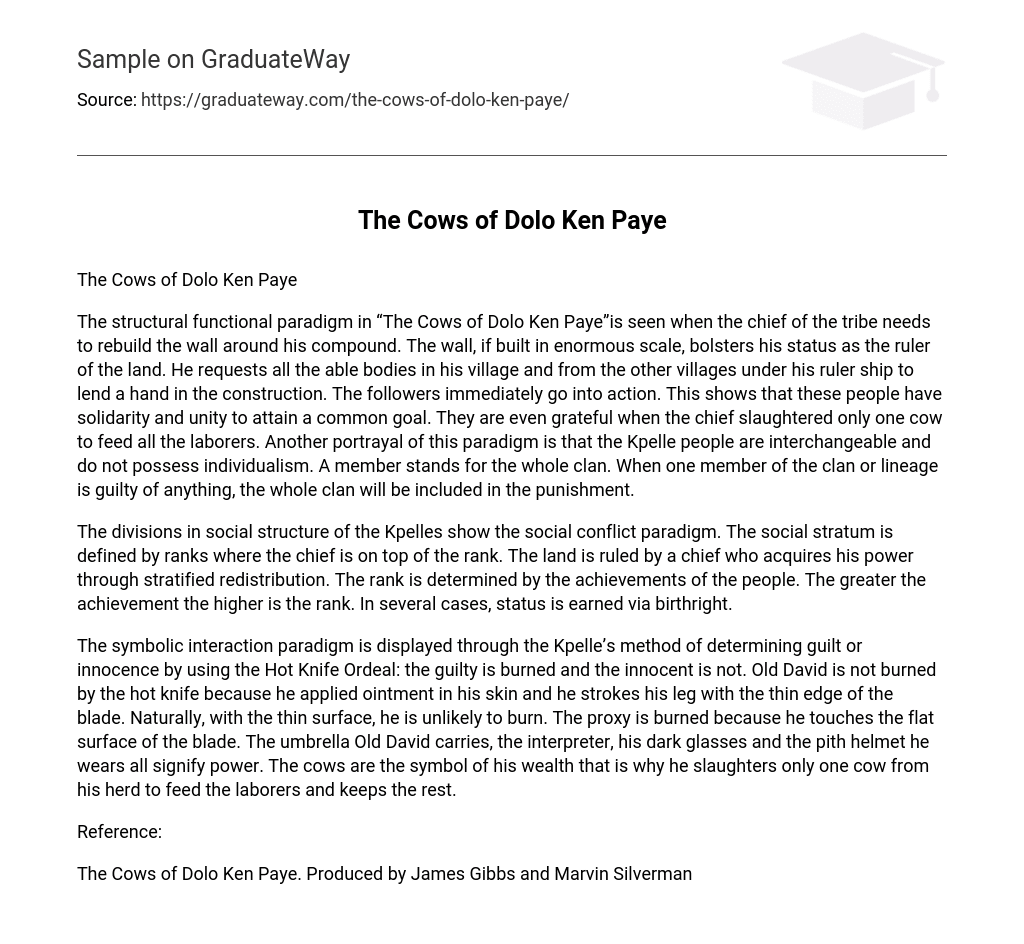The structural functional paradigm in “The Cows of Dolo Ken Paye”is seen when the chief of the tribe needs to rebuild the wall around his compound. The wall, if built in enormous scale, bolsters his status as the ruler of the land. He requests all the able bodies in his village and from the other villages under his ruler ship to lend a hand in the construction. The followers immediately go into action. This shows that these people have solidarity and unity to attain a common goal. They are even grateful when the chief slaughtered only one cow to feed all the laborers. Another portrayal of this paradigm is that the Kpelle people are interchangeable and do not possess individualism. A member stands for the whole clan. When one member of the clan or lineage is guilty of anything, the whole clan will be included in the punishment.
The divisions in social structure of the Kpelles show the social conflict paradigm. The social stratum is defined by ranks where the chief is on top of the rank. The land is ruled by a chief who acquires his power through stratified redistribution. The rank is determined by the achievements of the people. The greater the achievement the higher is the rank. In several cases, status is earned via birthright.
The symbolic interaction paradigm is displayed through the Kpelle’s method of determining guilt or innocence by using the Hot Knife Ordeal: the guilty is burned and the innocent is not. Old David is not burned by the hot knife because he applied ointment in his skin and he strokes his leg with the thin edge of the blade. Naturally, with the thin surface, he is unlikely to burn. The proxy is burned because he touches the flat surface of the blade. The umbrella Old David carries, the interpreter, his dark glasses and the pith helmet he wears all signify power. The cows are the symbol of his wealth that is why he slaughters only one cow from his herd to feed the laborers and keeps the rest.
Reference:
The Cows of Dolo Ken Paye. Produced by James Gibbs and Marvin Silverman





